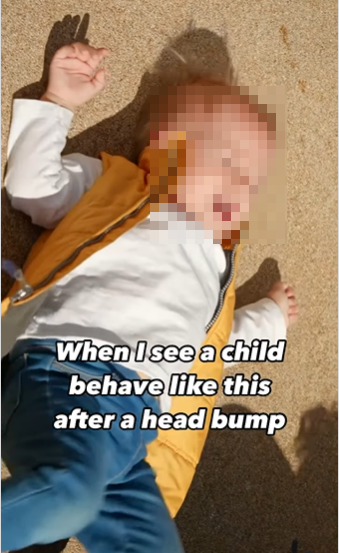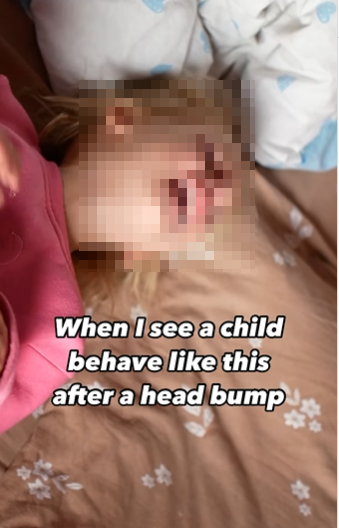But an ex-paramedic has warned that if they happen after your little one bumps their head, then this should ring alarm bells.
Nikki Jurcutz, behind the child and baby first aid page Tiny Hearts Education, shared a clip of a little girl throwing herself the around a bed and screaming.
Another showed a little boy grumpily dragging himself across the ground, whimpering.
If you’re a parent, these kinds of scenes might be nothing more than annoying to you.
But Nikki said you should pay special attention if you see a child behaving like this after a head bump.
Read more on child first aid
“As a former paramedic, this was something that would ring alarm bells for me,” she wrote.
“A child who is increasingly restless, agitated or combative after a head bump could be a sign that the head injury was more serious, and they should get a medical review urgently,” the first aider explained.
According to Nikki, signs of an agitated child include:
- Short attention span
- Being impulsive, uncooperative or resistant to care
- Low tolerance for pain or frustration
- Being violent
- Explosive unpredictable anger
- Rocking, rubbing
- Restlessness, pacing, excessive movement
- Repetitive behaviours
- Rapid, loud excessive talking
- Sudden changes of mood
- Excessive crying or laughing
- Hurting themselves
Nikki said it was a “good idea to monitor symptoms for at least 24-48 hours after a head bump”.
One parent joked in the comments: “What if those red flags describe my toddler’s personality.”
But a mum shared how she’d taken her little one straight to A&E after he’d bumped his head slipping on wet tiles and seemed to be acting strangely.
“He sat up straight away, cried etc and had a small gash on the back of his head,” she explained.
“He was a bit agitated and not himself. I took him to the emergency department straight away and lucky I did, he started being dazed and slurring and then ended up seizing in emergency.
“He had actually fractured his skull and needing surgery to repair it. I’m so glad I took him straight away!”
A paediatric nurse previously shared how to spot subtle differences between mild and serious head injuries in kids.
Meanwhile, Nikki also warned parents about signs your baby has suffered a life-threatening injury, like telltale raccoon eyes.
What do to if your child has a head injury
Most head injuries won’t be serious and you can treat them at home.
The NHS advises you:
- Hold an ice pack or bag of frozen peas in a tea towel to the area regularly for short periods in the first few days to bring down swelling
- Makes sure your little one rests and avoids stress
- Stay with your child for the first 24 hours
- Keep them off school until they’re feeling better
- Give them painkillers if they’re old enough to take them
But you should take your child to A&E if your child:
- Was knocked out but has now woken up
- Vomited since the injury
- Has a headache that doesn’t go away with painkillers
- Has a change in behaviour, like being more irritable or losing interest in things around you (especially in children under 5)
- Is crying more than usual (babies and young children especially)
- Has problems with memory
Your child could have concussion.
Symptoms usually start within 24 hours, but sometimes may not appear for up to three weeks, the NHS warned.

